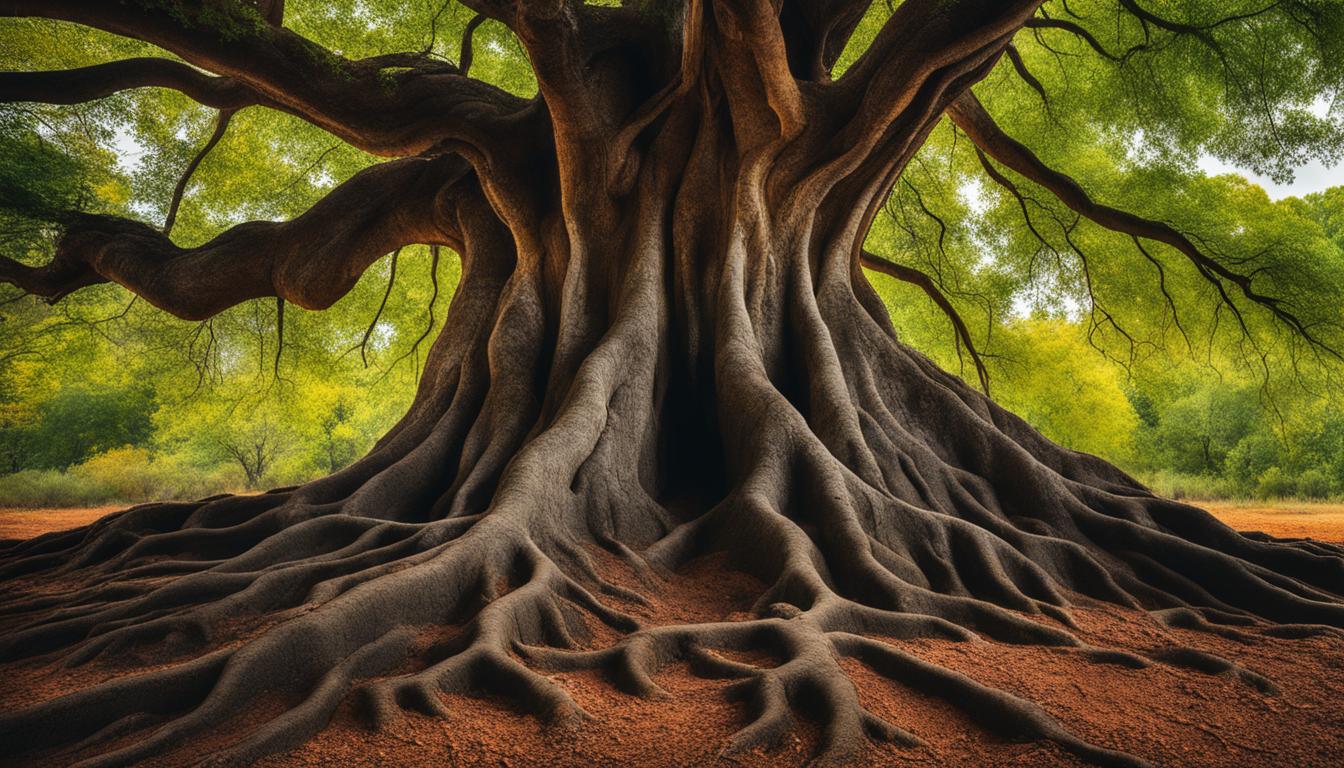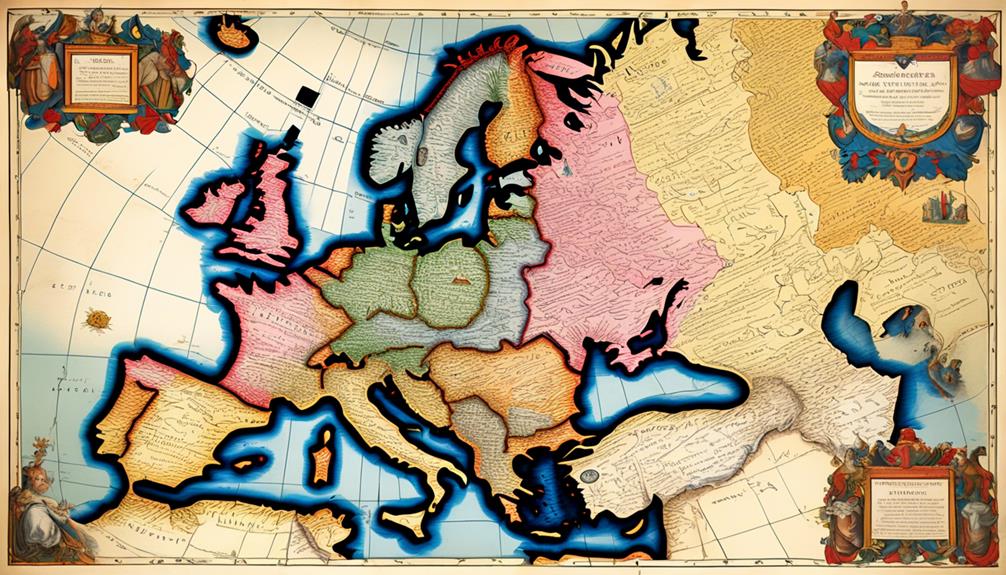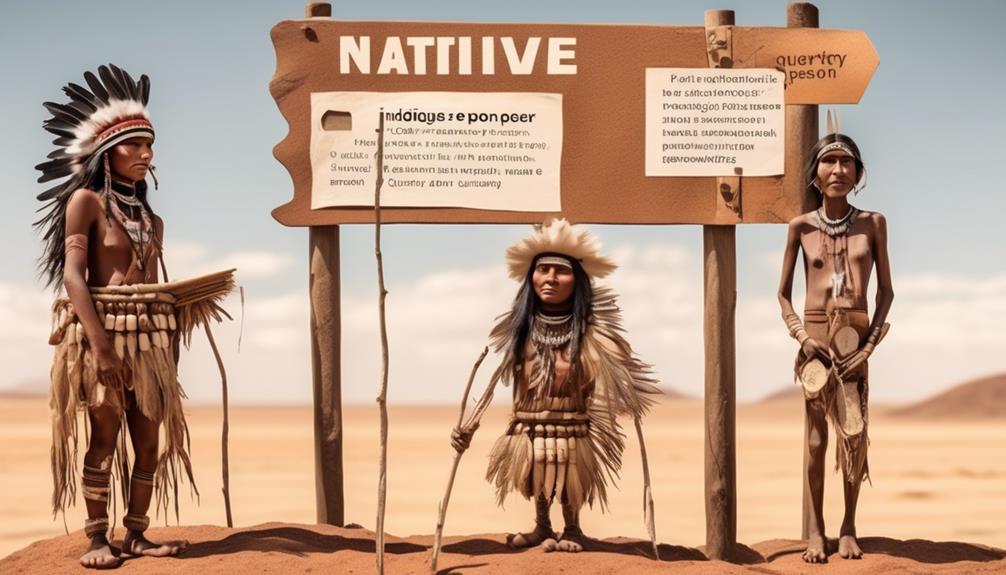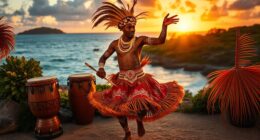The term “Aboriginal” can evoke various interpretations. This guide aims to explore the true significance of “Aboriginal” and its importance in the Australian cultural landscape.
Aboriginal encompasses the first people and custodians of Australia, including both Aboriginal and Torres Strait Islander peoples. It is essential to understand and respect their rich heritage and culture, which has endured for over 60,000 years. Unfortunately, the history of Aboriginal people also includes a dark legacy of marginalization and discrimination due to colonization.
For many years, the Aboriginal language, traditions, and cultural practices were deliberately suppressed. However, times are changing, and attitudes are evolving towards a more inclusive and respectful understanding of these communities. Now, let’s delve deeper into the meaning, significance, and proper usage of the term “Aboriginal.”
Key Takeaways:
- The term “Aboriginal” refers to the first people and custodians of Australia, including both Aboriginal and Torres Strait Islander peoples.
- Aboriginal people have a rich heritage and culture that deserves recognition and respect.
- Due to colonization, Aboriginal people have faced marginalization and discrimination throughout history.
- The term “Aboriginal” is evolving, and society is becoming more inclusive and respectful towards Aboriginal communities.
- Understanding the true meaning and significance of “Aboriginal” is essential to promote equality and cultural understanding.
The Importance of Language and Terminology
Language and terminology play a significant role in how we perceive and understand Aboriginal and Torres Strait Islander communities. The inappropriate use of terms can be offensive and perpetuate stereotypes. It is essential to use language that is respectful and acknowledges the diversity and complexity of indigenous cultures. Terms like indigenous meaning and native meaning should be used carefully, ensuring they do not diminish the identities and histories of these communities.
“Language is the road map of a culture. It tells you where its people come from and where they are going.” – Rita Mae Brown
When discussing Aboriginal and Torres Strait Islander communities, it is crucial to understand the deep significance of language in preserving their culture and heritage. Each word carries weight and meaning, serving as a vessel for stories, traditions, and collective knowledge. By using appropriate terminology, we can show respect and honor the rich tapestry of indigenous culture that spans thousands of years.
One common term that is often misused is “indigenous.” While it can refer to any original inhabitants of a particular region, it is more accurate and respectful to specify “Aboriginal and Torres Strait Islander.” This distinction recognizes the unique histories, languages, and cultural practices of Australia’s First Peoples. It is important to be mindful of this terminology when engaging in discussions about native culture.
Additionally, avoid using broad labels that oversimplify the diverse Aboriginal and Torres Strait Islander communities. Each group within these communities has its distinct language, customs, and traditions. Referring to them collectively as a homogeneous entity erases their individual identities and undermines the depth of their cultural richness.
Embracing Terminology with Respect
Understanding the correct language and terminology not only demonstrates cultural sensitivity but also helps foster meaningful connections and alliances. By respecting the preferred terms, we can establish rapport and trust with Aboriginal and Torres Strait Islander individuals and communities.
When writing or speaking about these communities, consider the following:
- Use Aboriginal and Torres Strait Islander as inclusive terms that honor the diversity of cultures.
- Avoid using terms like “aborigines” or “natives,” which can perpetuate stereotypes and diminish the lived experiences of these communities.
- Carefully capitalize Aboriginal and Torres Strait Islander to signify their significance and respect their identities.
- Ensure abbreviations like “ATSI” are not used in formal or official documents, as they can be seen as disrespectful or dismissive.
The Power of Language in Shaping Perceptions
Language has the power to shape our perceptions and attitudes. By using accurate and respectful terms, we can contribute to a society that values and appreciates the diverse cultures that make up Australia. Educating ourselves, fostering cultural understanding, and engaging in open dialogue are crucial steps towards building a more inclusive and respectful nation.
Definitions and Identity
Understanding the definitions and identity of Aboriginal and Torres Strait Islander people is essential in recognizing their diverse cultures and rich heritage. According to the High Court of Australia, an “Aboriginal or Torres Strait Islander person” is someone of Aboriginal or Torres Strait Islander descent who identifies as such and is accepted by the community.
This definition emphasizes the importance of self-identification and community acceptance in defining Aboriginal and Torres Strait Islander identity. It recognizes that identity is not solely based on ancestry but also on an individual’s connection to their culture and community.
Australia’s native population comprises numerous indigenous tribes, each with its distinct language, culture, and traditions. These indigenous tribes have inhabited the land for thousands of years, maintaining their unique identities and connections to country.
Understanding and honoring the diversity of these indigenous tribes is crucial in appreciating the richness of Aboriginal and Torres Strait Islander cultures. It allows us to embrace the different languages and customs that contribute to the tapestry of Australia’s heritage.
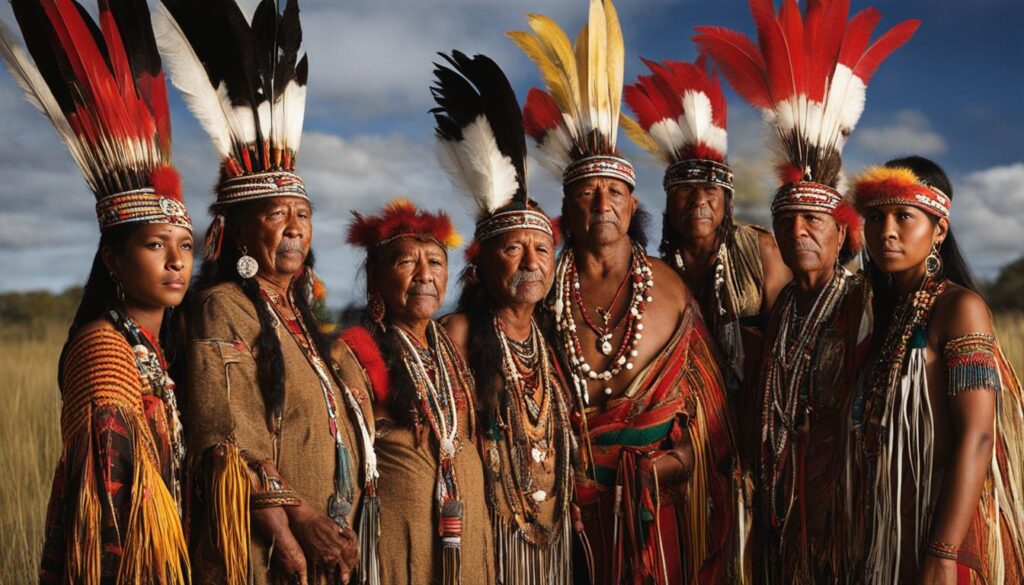
Abbreviations should also be used with caution. Abbreviations such as “ATSI” should be avoided in internal or external documents. It is essential to prioritize clarity and accuracy in our communications, rather than relying on potentially confusing abbreviations.
By following these guidelines, we show our respect for the Aboriginal communities and contribute to building a more inclusive and culturally sensitive society.
Guidelines for Correct Use of ‘Torres Strait Islander’
When referring to Torres Strait Islander people, it is important to use the term as an adjective, not as a noun. This helps to recognize and respect their individuality and cultural identity. Always capitalize the term “Torres Strait Islander” as a sign of respect and acknowledgement.
While using abbreviations can be convenient in certain contexts, it is recommended to avoid abbreviating “Torres Strait Islander” when referring to individuals. This ensures that their full identity is acknowledged and respected.
However, it is acceptable to use abbreviations like “TSI” in acronyms for organizations or programs that support Torres Strait Islander communities. For example, the acronym A&TSIHB (Aboriginal & Torres Strait Islander Health Board) can be used to refer to an organization while respecting the cultural sensitivity of the term “Torres Strait Islander.”
To summarize:
- Use “Torres Strait Islander” as an adjective, not as a noun.
- Always capitalize the term “Torres Strait Islander.”
- Avoid abbreviating “Torres Strait Islander” when referring to individuals.
- Use abbreviations like “TSI” in acronyms for organizations or programs.
By following these guidelines, we can foster inclusivity and cultural respect when talking about Torres Strait Islander people.
| Guidelines for Correct Use of ‘Torres Strait Islander’ |
|---|
| Use “Torres Strait Islander” as an adjective, not as a noun. |
| Always capitalize the term “Torres Strait Islander.” |
| Avoid abbreviating “Torres Strait Islander” when referring to individuals. |
| Use abbreviations like “TSI” in acronyms for organizations or programs. |
Guidelines for Correct Use of ‘Indigenous’
When discussing the terminology surrounding Aboriginal and Torres Strait Islander peoples, it is important to understand the appropriate use of the term ‘Indigenous’. While it is a widely used term, it is not specific to Aboriginal and Torres Strait Islander people alone. Some individuals and communities feel that the term ‘Indigenous’ diminishes their unique identity and cultural heritage. Therefore, it is generally more respectful and appropriate to use the term ‘Aboriginal and Torres Strait Islander’ when specifically referring to these communities.
In addition, when using the term ‘indigenous’ to refer to Aboriginal and Torres Strait Islander peoples, it should always be capitalized to show recognition and respect. Using ‘indigenous’ in lowercase can be seen as dismissive and belittling.
“Using the term ‘Indigenous’ vaguely undermines the distinct identity and cultural legacy of Aboriginal and Torres Strait Islander peoples. By employing more specific terminology like ‘Aboriginal and Torres Strait Islander’, we honor their rich heritage and acknowledge the importance of community and self-identification.” – Indigenous Rights Advocate
It is crucial to be mindful of the language we use and the impact it can have on individuals and communities. By using respectful and accurate terminology, we contribute to a more inclusive and understanding society.
Alternative Terms
There are alternative terms that are more specific to Aboriginal and Torres Strait Islander peoples and show a deeper understanding of their diverse cultures:
- First Peoples: This term recognizes that Aboriginal and Torres Strait Islander peoples were the first inhabitants of Australia.
- Original Australians: This term highlights the unique status of Aboriginal and Torres Strait Islander peoples as the original inhabitants of Australia.
- First Australians: This term acknowledges the historical and cultural significance of Aboriginal and Torres Strait Islander peoples as the first people of Australia.
When using these alternative terms, it is important to do so respectfully and with a genuine understanding of the history, cultural diversity, and contributions of Aboriginal and Torres Strait Islander peoples.
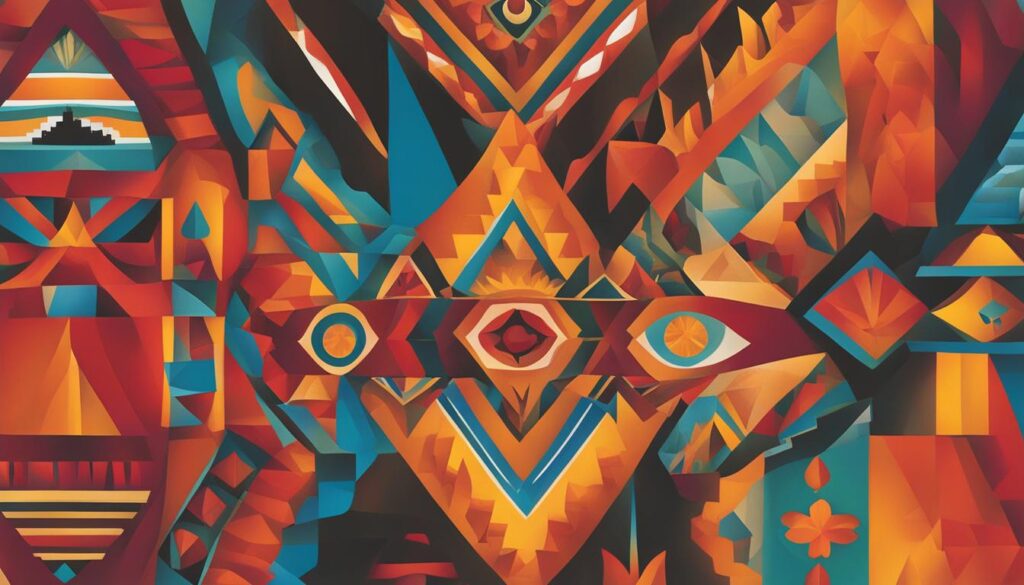
Overall, using appropriate and respectful language is a small but meaningful step towards building understanding and fostering cultural respect. By recognizing the unique identity and heritage of Aboriginal and Torres Strait Islander peoples, we create a more inclusive and harmonious society.
Correct Terminology for First Nations or First Australians
When acknowledging the traditional custodianship of Aboriginal and Torres Strait Islander people, it is essential to consider the terminology used. While phrases like “First Nations” and “First Australians” are often used with good intentions, they can inadvertently discount the sovereignty and distinct nations that existed in Australia before colonization. To show respect and recognition for the unique identities and histories of Aboriginal and Torres Strait Islander peoples, it is crucial to use alternative terms that reflect their diverse cultures and heritage.
“First Nations” and “First Australians” can be seen as discounting the sovereignty and distinct nations that existed in Australia before colonization.”
To ensure accuracy and cultural sensitivity, terms such as “Aboriginal and Torres Strait Islander peoples” or “Traditional Custodians” can be used instead. These terms honor the rich and diverse cultural heritage of these communities, highlighting the unique connection they have to the land and their distinct cultures.
It is important to remember that the Aboriginal and Torres Strait Islander peoples are not a homogeneous group but comprise different nations, language groups, and cultural practices. By using terminology that recognizes their individual identities, we promote inclusivity and respect.
Alternative Terminology
Here are a few alternative terms that can be used to acknowledge and respect the diverse identities and histories of Aboriginal and Torres Strait Islander peoples:
| Term | Explanation |
|---|---|
| Traditional Owners | Recognizes the Aboriginal and Torres Strait Islander peoples as the original custodians of the land, emphasizing their deep connection and responsibility to their ancestral territories. |
| First Peoples | Highlights the status of Aboriginal and Torres Strait Islander peoples as the first inhabitants of Australia, acknowledging their rich cultural heritage. |
| First Australians | Recognizes Aboriginal and Torres Strait Islander peoples as the first inhabitants of Australia while honoring their individuality and distinct cultures. |
| First Nations People | Acknowledges the diverse nations and language groups that existed in Australia before colonization, honoring their distinct identities. |
Using these alternative terms demonstrates a commitment to inclusivity, cultural respect, and an understanding of the diverse identities of Aboriginal and Torres Strait Islander peoples.
Self-Identifying Terms in Aboriginal and Torres Strait Islander Communities
Aboriginal and Torres Strait Islander communities have a rich cultural heritage with unique self-identifying terms that reflect their languages and traditions. These terms vary across regions and language groups, showcasing the diversity of these communities. It is important to use these self-identifying terms when referring to individuals or community organizations to show respect and cultural understanding.
Here are some examples of self-identifying terms used by Aboriginal and Torres Strait Islander peoples:
- Murri: Used by some Aboriginal communities in Queensland.
- Goori: Self-identifying term for Aboriginal people in New South Wales.
- Koori: Self-identifying term for Aboriginal people in Victoria.
- Palawa: Self-identifying term for Aboriginal people in Tasmania.
- Nunga: Self-identifying term for Aboriginal people in South Australia.
- Yolngu: Self-identifying term for Aboriginal people in the Yolngu language group of Arnhem Land, Northern Territory.
- Anangu: Self-identifying term for Aboriginal people in the Anangu Pitjantjatjara Yankunytjatjara (APY) Lands of South Australia.
Using these self-identifying terms demonstrates our commitment to cultural respect and acknowledges the diversity within Aboriginal and Torres Strait Islander communities. By utilizing these terms, we contribute to a more inclusive and culturally sensitive dialogue.
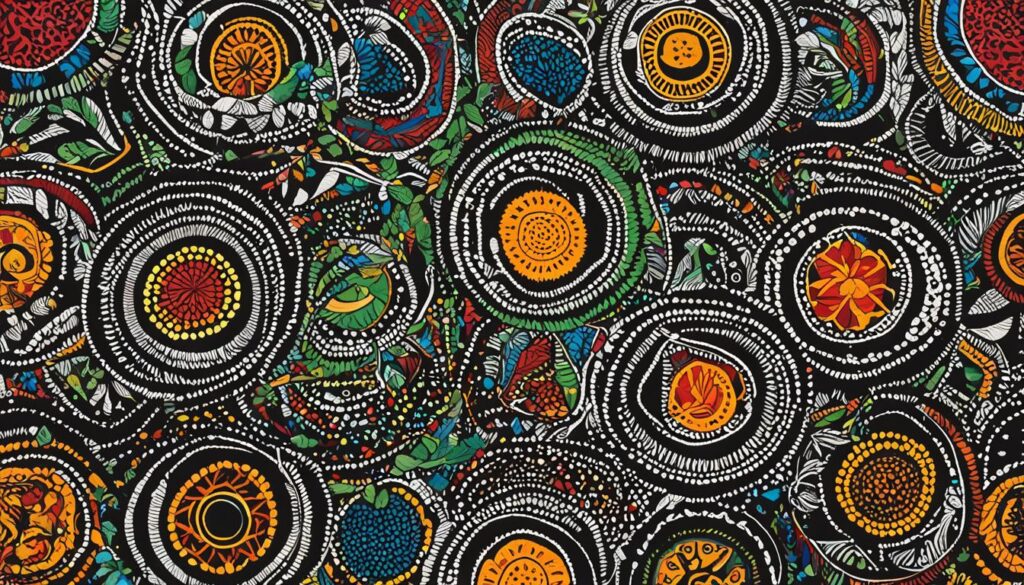
Image: Traditional Aboriginal artwork reflecting cultural diversity and self-identifying terms within Aboriginal and Torres Strait Islander communities.
Recognizing Country and Language Groups
When engaging with Aboriginal and Torres Strait Islander peoples, it is important to recognize and respect their specific “country” or “language group.” These terms reflect their deep ancestral connections to their lands, languages, and cultures. By acknowledging these connections, we honor the unique origins and traditions of each language group. Additionally, there are broader terms such as “Koori,” “Murri,” and “Yolngu” that roughly identify specific regions or boundaries within the broader Aboriginal and Torres Strait Islander communities. Understanding and appreciating these distinctions helps us fully embrace the diverse richness of Aboriginal and Torres Strait Islander cultures.
Below is a table showcasing the language groups and corresponding regions within Australia:
| Language Group | Region |
|---|---|
| Yolngu | Northeast Arnhem Land |
| Ngunnawal | Canberra region |
| Arrernte | Central Australia |
| Noongar | Southwest Western Australia |
Understanding the significance of country and language groups strengthens our cultural awareness and helps us foster genuine connections with Aboriginal and Torres Strait Islander peoples.
Appropriateness of Abbreviations and Acronyms
When communicating with Aboriginal and Torres Strait Islander people, it is important to be mindful of the appropriate use of abbreviations and acronyms. While these shortened forms of words can be convenient in certain contexts, they must be employed with respect and cultural understanding.
Some acronyms, such as “ATSIC” (Aboriginal and Torres Strait Islander Commission), have gained widespread acceptance and recognition. However, in general conversations and interactions, it is recommended to avoid using abbreviations when referring to individuals or communities.
By respecting and acknowledging the full terms, we demonstrate a level of respect for the cultures and identities of Aboriginal and Torres Strait Islander people. Instead of relying on abbreviations, take the time to use the complete names or phrases, fostering a deeper understanding of their significance and meaning.
Being mindful of language choices is a way of showing respect and cultural sensitivity, helping to create a more inclusive and understanding society.
As the famous adage goes, “Respect is a two-way street.” By taking the time to use full terms instead of abbreviations, we show our respect and appreciation for the diverse cultures and identities of Aboriginal and Torres Strait Islander people.
“The appropriate use of language and terminology is crucial in fostering understanding and respect for Aboriginal and Torres Strait Islander communities. Using abbreviations can unintentionally minimize the significance and richness of their cultures. It’s important to prioritize cultural sensitivity and avoid assumptions by utilizing complete terms and phrases.” – Cultural Respect Advocate
We believe that by embracing the richness of language and culture, we can foster better communication and stronger bonds between communities.

By using respectful language and avoiding unnecessary abbreviations, we can contribute to a more inclusive and culturally aware society.
Dangers of Stereotyping and Categorizing
Stereotyping and categorizing Aboriginal and Torres Strait Islander people can be harmful and perpetuate harmful and inaccurate preconceptions. It is important to recognize the diverse and complex societies of these communities. Avoid terms like “primitive,” “simple,” or “native,” which are offensive and diminish the rich cultural heritage and achievements of Aboriginal and Torres Strait Islander people. Acknowledge the sophistication and effectiveness of their resource management and social organization.
Appreciating Diverse Societies
Aboriginal and Torres Strait Islander communities encompass a vast range of cultures, traditions, and languages. Each community has its distinct histories and ways of life, deeply rooted in their connection to the land. Categorizing these communities based on narrow stereotypes disregards the diversity and complexity that exists within.
Stereotyping Aboriginal and Torres Strait Islander people not only perpetuates harmful narratives but also undermines their contributions to society. It is essential to recognize the sophistication and effectiveness of their resource management, social organization, and cultural practices.
Aboriginal and Torres Strait Islander societies feature intricate resource management systems that have sustained their communities for thousands of years. Whether it’s the sophisticated agriculture techniques used by Aboriginal people or the navigational skills of the Torres Strait Islanders, their knowledge and practices showcase their advanced understanding of the environment and their ability to harness its resources sustainably.
By categorizing these diverse societies under simplistic and derogatory terms, we fail to appreciate and learn from their rich cultural heritage. It is crucial to challenge these harmful stereotypes and engage in a more nuanced understanding of Aboriginal and Torres Strait Islander cultures.
Strength in Diversity
Recognizing the diverse societies of Aboriginal and Torres Strait Islander communities allows us to acknowledge their unique contributions and strengths. Our understanding of their achievements is enriched when we appreciate the complex and intricate nature of their cultural practices.
Acknowledging the diverse societies of Aboriginal and Torres Strait Islander people fosters a more respectful and inclusive society. It allows us to value their contributions and create meaningful partnerships based on mutual respect and understanding.
Embracing the true diversity of these communities creates opportunities for cultural exchange, learning, and collaboration. By challenging stereotypes and categorizations, we can create a society that appreciates and celebrates the richness of Aboriginal and Torres Strait Islander cultures.
Acknowledging Cultural Complexity
Aboriginal and Torres Strait Islander societies are characterized by complexity and adaptability. They have developed intricate systems of governance, trade, and social organization, reflecting their diverse environments and cultural practices.
| Cultural Aspect | Diverse Societies |
|---|---|
| Language | Aboriginal and Torres Strait Islander communities speak a multitude of languages, each unique and reflective of their specific cultural practices and histories. |
| Art and expression | Aboriginal and Torres Strait Islander art is incredibly diverse, spanning different styles, techniques, and mediums, each carrying cultural and spiritual significance. |
| Social organization | From kinship systems to cultural protocols, Aboriginal and Torres Strait Islander communities have complex social structures that are integral to their identity and cohesion. |
| Connection to land | Aboriginal and Torres Strait Islander communities have deep connections to their lands, carrying spiritual and cultural significance. Their practices of land management reflect a deep understanding of the environment and sustainable practices. |
By recognizing the cultural complexity of Aboriginal and Torres Strait Islander societies, we combat harmful stereotypes and perceive the richness and depth of their history, achievements, and contributions to Australia’s diverse tapestry.
Recognizing Identity, Diversity, and Locality
Recognizing and respecting the diverse identities and cultural heritage of Aboriginal and Torres Strait Islander people is crucial. Understanding their specific language groups, countries, and boundaries helps foster cultural education and respect. Avoid generalizing communities based on terms like “rural,” “isolated,” or “remote.” These terms should be used only in reference to geography and access to services, without assuming any social or cultural differences.
Appreciating the unique identity and diversity within Aboriginal and Torres Strait Islander communities is essential for creating a more inclusive and understanding society. These communities encompass a wide array of cultural traditions, languages, and customs, enriching the fabric of Australian society. By recognizing and honoring these distinct identities, we can foster greater appreciation and mutual respect.
| Key Points | Importance |
|---|---|
| Recognizing diverse identities | Respecting the multifaceted nature of Aboriginal and Torres Strait Islander communities leads to greater understanding and acceptance. |
| Understanding cultural heritage | Appreciating the richness and depth of cultural heritage fosters cultural education and promotes a more inclusive society. |
| Avoiding generalizations | By avoiding assumptions and generalizations, we create space for acknowledging the immense diversity within Aboriginal and Torres Strait Islander communities. |
It is important to recognize that each language group, country, and boundary holds unique significance in the cultural landscape of Australia. By understanding and acknowledging these distinctions, we demonstrate our commitment to cultural education and appreciation. Instead of essentializing or homogenizing Aboriginal and Torres Strait Islander communities, let us celebrate the mosaic of identities that exist within them.
“The richness of Aboriginal and Torres Strait Islander communities lies in their diverse languages, cultural practices, and connections to specific lands. Embracing this diversity requires us to move beyond generalizations and appreciate the unique identities present within these communities.”
Appreciating the locality of Aboriginal and Torres Strait Islander communities is essential for understanding the nuanced experiences and challenges they may face. Locality refers not only to the geographic location but also the social, historical, and cultural contexts in which communities exist. By avoiding generalizations and stereotypes tied to specific locations, we can foster a more accurate and respectful understanding of their experiences.
Fostering Cultural Education
Recognizing identity, diversity, and locality is closely tied to promoting cultural education. By learning about the distinct customs, languages, and histories of Aboriginal and Torres Strait Islander communities, we can develop a deeper understanding and appreciation for their cultural contributions. Cultural education encourages respect, empathy, and collaboration, fostering stronger bonds between diverse communities in Australia.
Embracing cultural education not only enriches our knowledge and understanding but also paves the way for a more inclusive and harmonious society. By celebrating the diverse identities, cultural heritage, and geographical contexts of Aboriginal and Torres Strait Islander peoples, we honor their resilience, contributions, and ongoing cultural practices.
The Power of Language in Building Bridges
Using appropriate terminology and language is a powerful way to build bridges between communities and foster cultural understanding. At the heart of this understanding lies the recognition and acknowledgment of the preferred names, identities, and cultural knowledge of Aboriginal and Torres Strait Islander people. By embracing their unique perspectives and experiences, we can create inclusive and respectful spaces that celebrate the diversity of our society.
Language is more than just a means of communication. It shapes our perceptions and attitudes, influencing how we see the world and interact with others. When we use accurate and respectful terms to refer to Aboriginal and Torres Strait Islander people, we affirm their identities and contribute to a more equitable and just society.
“Language exerts hidden power, like a moon on the tides.”
By understanding and respecting the appropriate terminology, we can avoid perpetuating stereotypes and offensive language. For example, using terms like “indigenous” or “native” without considering the specific context can diminish the identities and histories of these communities.
Table 14.1: Examples of Appropriate Terminology
| Incorrect Terminology | Correct Terminology |
|---|---|
| Aborigines | Aboriginal and Torres Strait Islander peoples |
| Aboriginals | Aboriginal and Torres Strait Islander individuals or communities |
| ATSI | Aboriginal and Torres Strait Islander |
Building cultural understanding goes beyond using appropriate terminology. It requires active engagement and a willingness to learn from Aboriginal and Torres Strait Islander communities. By listening to their stories, honoring their heritage, and respecting their knowledge, we can bridge cultural gaps and foster meaningful connections.
Together, let us be conscious of the power of our words and strive to create a society that values and respects all cultures. By using language that promotes inclusion, we can build meaningful relationships and contribute to a more harmonious and equitable future.
Conclusion
Understanding Aboriginal terminology is an essential step towards cultural respect and embracing diversity. By using accurate and respectful language, we can create inclusive spaces that honor the rich heritage, traditions, and contributions of Aboriginal and Torres Strait Islander people. It is our responsibility to continually educate ourselves, ask questions, and learn from the diverse voices and experiences within these communities.
Together, we can build a society that values and respects all cultures. By recognizing the meaning and appropriate use of Aboriginal terms, we demonstrate our commitment to creating a more inclusive and equitable future.
Let us embark on this journey of cultural understanding and respect, embracing the diversity that enriches our society. By actively listening to and learning from Aboriginal and Torres Strait Islander communities, we can foster mutual understanding, break down barriers, and promote social justice for all.
FAQ
What does the term “Aboriginal” mean?
The term “Aboriginal” refers to the first people and custodians of Australia, including both Aboriginal and Torres Strait Islander peoples.
Why is language and terminology important when referring to Aboriginal and Torres Strait Islander communities?
Language and terminology play a significant role in how we perceive and understand these communities. The inappropriate use of terms can be offensive and perpetuate stereotypes.
How is “Aboriginal” defined?
According to the High Court of Australia, an “Aboriginal or Torres Strait Islander person” is someone of Aboriginal or Torres Strait Islander descent who identifies as such and is accepted by the community.
What is the preferred collective name for Aboriginal and Torres Strait Islander people?
The preferred collective name is “Aboriginal and Torres Strait Islander.” Other terms like “Aboriginal and Torres Strait Islander Australians” can also be used.
How should the term “Aboriginal” be used?
The term “Aboriginal” should be used as an adjective, not as a noun. It should always be capitalized to give it the appropriate recognition and respect.
How should the term “Torres Strait Islander” be used?
The term “Torres Strait Islander” should be used as an adjective, not as a noun. It should always be capitalized.
What is the appropriate use of the term “Indigenous”?
The term “Indigenous” should be used with caution, as it is not specific to Aboriginal and Torres Strait Islander people. It is generally more appropriate to use “Aboriginal and Torres Strait Islander” when specifically referring to these communities.
What are some alternative terms to use instead of “First Nations” or “First Australians”?
It is recommended to use terminology that respects and recognizes the unique identities and histories of Aboriginal and Torres Strait Islander peoples.
Are there specific self-identifying terms used in Aboriginal and Torres Strait Islander communities?
Yes, there are self-identifying terms derived from their languages and cultural traditions. These terms vary depending on the region and language group.
How should the concept of “country” and “language groups” be recognized?
Aboriginal and Torres Strait Islander peoples often prefer to be identified by their specific “country” or “language group,” reflecting their ancestral connections and responsibilities to their lands, languages, and cultures.
Are abbreviations and acronyms appropriate to use?
Abbreviations and acronyms can be useful in certain contexts but must be used respecting the preferences and sensitivities of Aboriginal and Torres Strait Islander people.
What are the dangers of stereotyping and categorizing Aboriginal and Torres Strait Islander people?
Stereotyping and categorizing can be harmful and perpetuate harmful and inaccurate preconceptions. It is important to recognize the diverse and complex societies of these communities.
How should we recognize the identity, diversity, and locality of Aboriginal and Torres Strait Islander people?
It is crucial to acknowledge and respect the diverse identities and cultural heritage of Aboriginal and Torres Strait Islander people, as well as understand their specific language groups, countries, and boundaries.
How does language play a role in building bridges between communities?
Using appropriate terminology and language is a powerful way to foster cultural understanding and create inclusive spaces that honor the heritage, traditions, and contributions of Aboriginal and Torres Strait Islander people.
How can we understand Aboriginal terminology and contribute to cultural respect and diversity?
Understanding the meaning and appropriate use of Aboriginal terminology is a journey of cultural respect and embracing diversity. By using accurate and respectful language, we can contribute to creating inclusive spaces that value and respect all cultures.
Source Links
- https://www.ipswich.qld.gov.au/__data/assets/pdf_file/0008/10043/appropriate_indigenous_terminoloy.pdf
- https://healthinfonet.ecu.edu.au/healthinfonet/getContent.php?linkid=675466&title=The Australian Indigenous HealthInfoNet guidelines for Aboriginal and Torres Strait Islander terminology&contentid=44676_1
- https://fashionjournal.com.au/life/terminology-guide-aboriginal-torres-strait-islander/
Mary is a passionate writer who brings creativity and a fresh perspective to our team. Her words have the power to captivate and inspire, making her an essential contributor to our content. Mary’s commitment to storytelling and dedication to promoting Indigenous culture ensures that her work touches the hearts of our readers. We’re fortunate to have her as part of our team.
